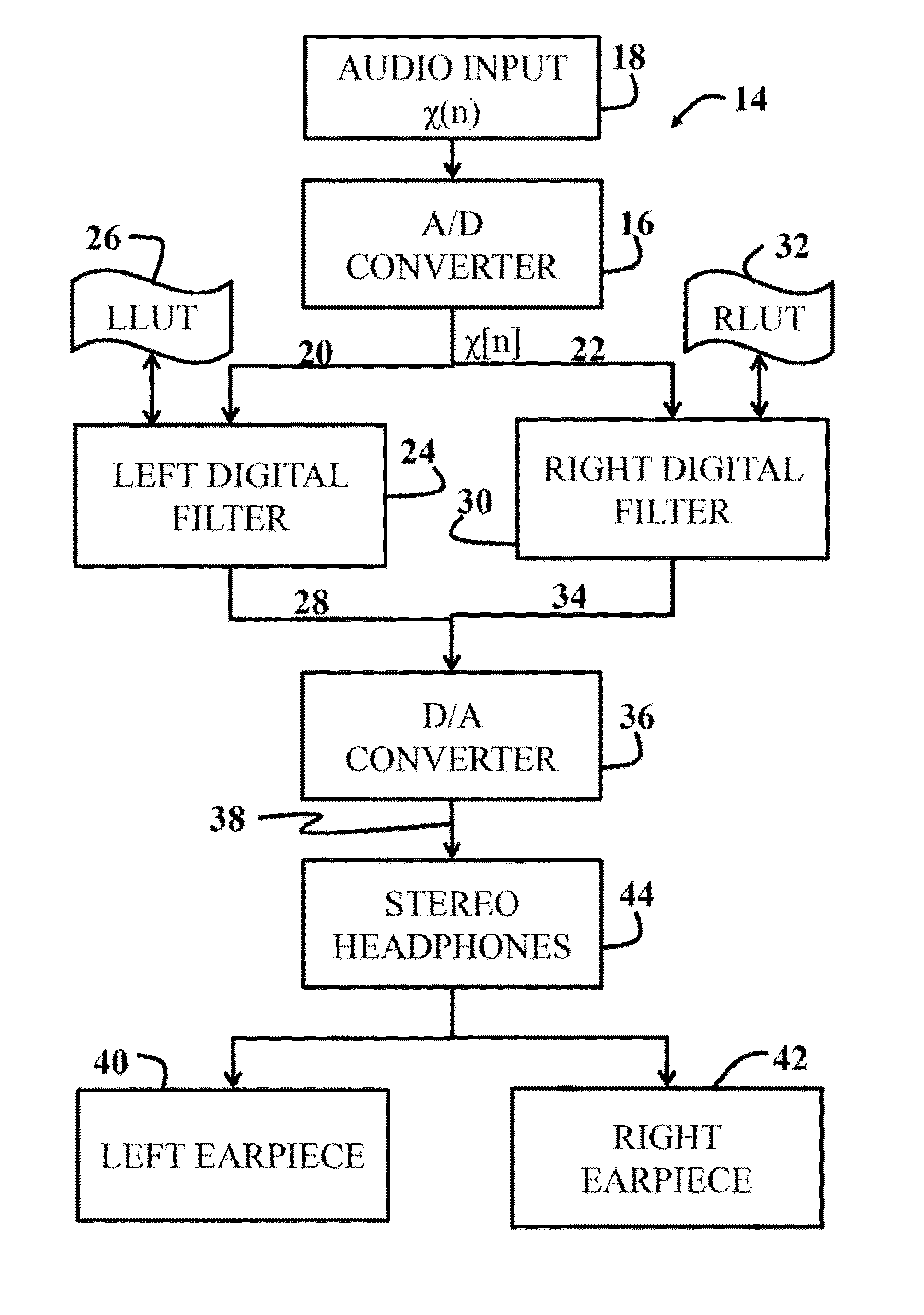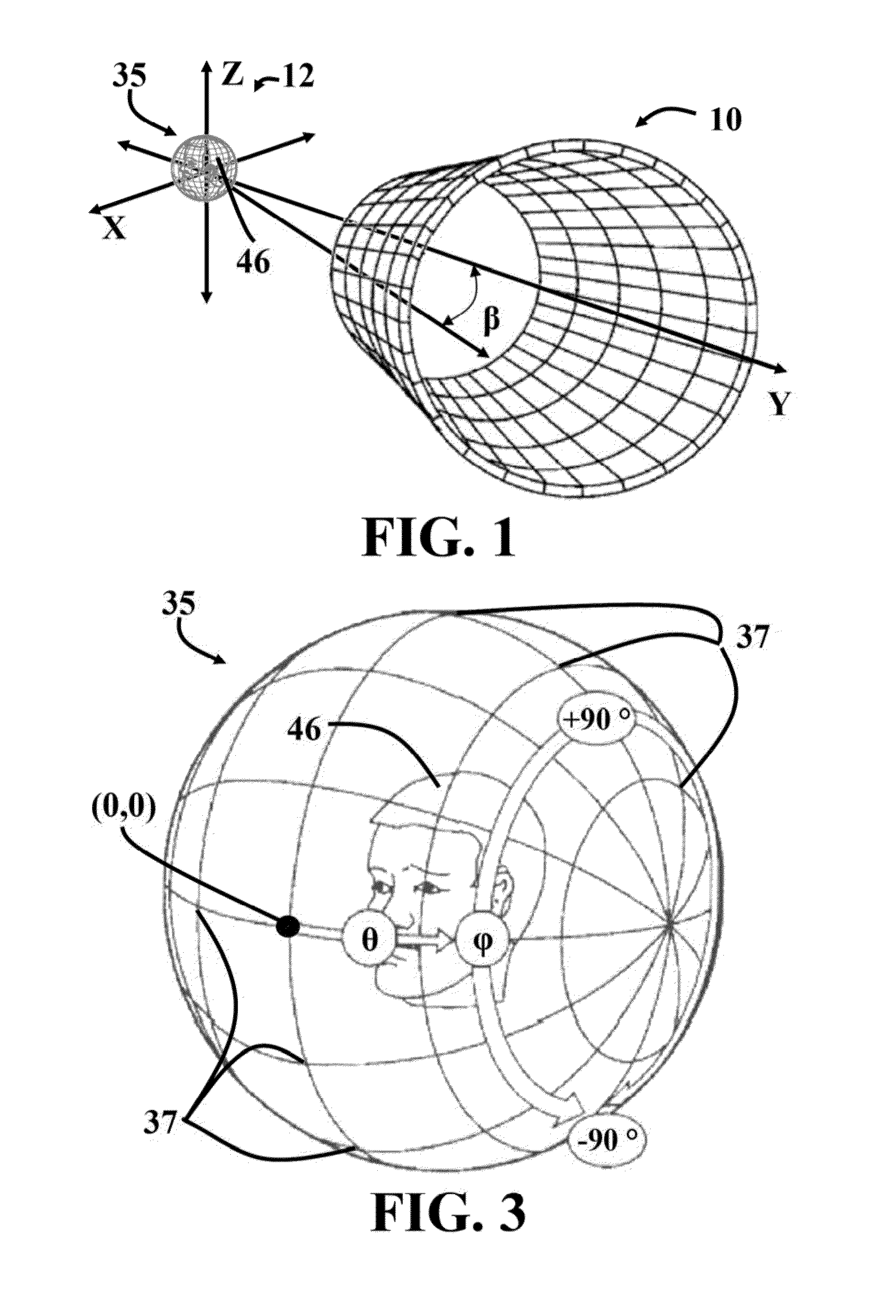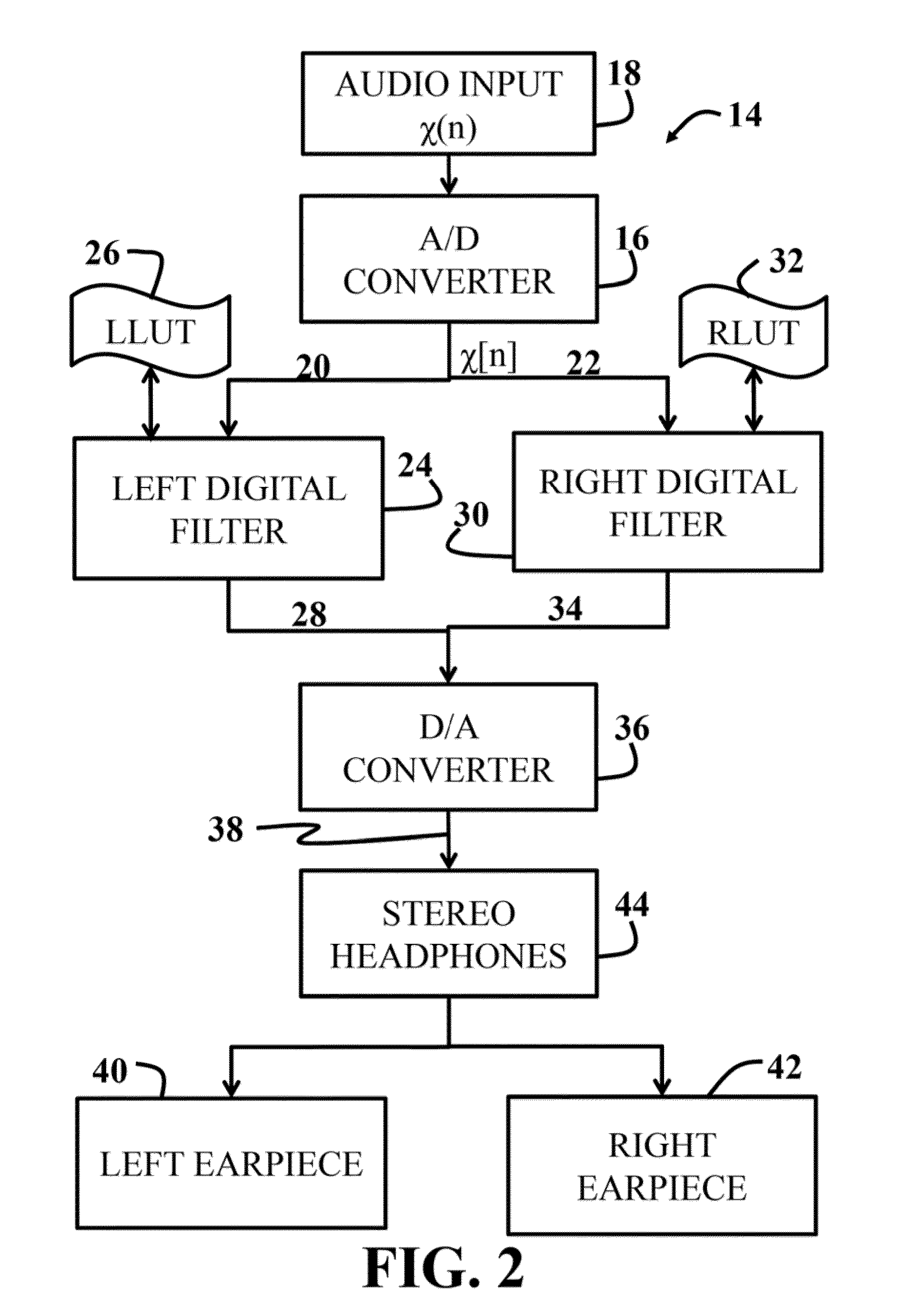Methods of using head related transfer function (HRTF) enhancement for improved vertical- polar localization in spatial audio systems
a transfer function and spatial audio technology, applied in the field of spatial location, can solve the problems of difficult to achieve a level of localization performance comparable to free field listening, limited demonstrations of this level of virtual sound fidelity, and rarely been able to achieve the same level of localization accuracy. hrtf-based virtual audio systems have a vertical magnitude of each channel, and the effect of enhancing the left lateral magnitude of each channel
- Summary
- Abstract
- Description
- Claims
- Application Information
AI Technical Summary
Benefits of technology
Problems solved by technology
Method used
Image
Examples
example 1
[0068]FIGS. 6A and 6B show exemplary calculations of a right ear enhanced HRTF for source locations within the cone of confusion 20 (FIG. 1) at θ=45°. The dotted lines in FIG. 6A represent the HRTF |Hr,45°,φ(jω)| measured at five degree intervals in φ. The bold line in FIG. 6A represents a median magnitude HRTF across all of these values, |Hr,45°Lat(jω)|. The solid black lines in FIG. 6B represent unenhanced HRTFs E100 measured at 60 degree intervals in φ, ranging from −180° to +180°. For comparison purposes, the dotted lines at each location of φ replot the median HRTF E0, which does not change with φ locations. The dashed lines in FIG. 6B represent the enhanced HRTF E200 having an α value of 200%. These curves show that the elevation-dependent spectral features of the HRTF E100 are greatly exaggerated in the enhanced HRTFs E200. A nice example of this effect is the notch that occurs at roughly 8 kHz in the unenhanced HRTF E100 for θ=45°, =0° (almost exactly in the center of FIG. ...
example 2
[0069]Nine paid volunteers, (referred to as “listeners”) ranging in age from 18 to 23, wearing DT990 headphones (Beyerdynamic Inc., Farmingdale, N.Y.) participated in localization experiments. The experiment took place with the listeners standing in the middle of a geodesic sphere (herein having a diameter of about 4.3 m) equipped with 277 full-range loudspeakers spaced roughly every 15° along an inside surface of the sphere. Each speaker is equipped with a cluster of four LEDs operably coupled to a head tracking device, for example, commercially-available an IS-900 (InterSense. Billerica, Mass.) mounted inside the sphere and used to create an LED “cursor” for tracking a direction of the listener's head or of a hand-held response wand. The LED light at a location in response to where the listener is pointing.
[0070]A set of individualized HRTFs for each listener was measured in the sphere using a periodic chirp stimulus generated from each loudspeaker position. These HRTFs were time-...
PUM
 Login to View More
Login to View More Abstract
Description
Claims
Application Information
 Login to View More
Login to View More - R&D
- Intellectual Property
- Life Sciences
- Materials
- Tech Scout
- Unparalleled Data Quality
- Higher Quality Content
- 60% Fewer Hallucinations
Browse by: Latest US Patents, China's latest patents, Technical Efficacy Thesaurus, Application Domain, Technology Topic, Popular Technical Reports.
© 2025 PatSnap. All rights reserved.Legal|Privacy policy|Modern Slavery Act Transparency Statement|Sitemap|About US| Contact US: help@patsnap.com



